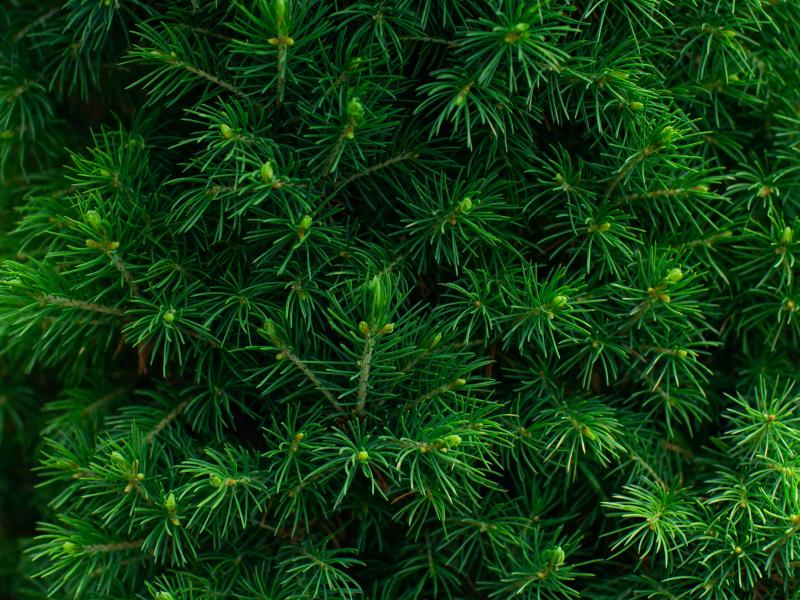In order to terrify soldiers on the ground, Germany fitted its Ju 87 dive bombers with air-powered sirens that screeched a shrieking, unworldly wail when the planes attacked the hundreds of thousands of Allied troops trapped along the beaches of Dunkirk. Over 800 vessels evacuated the troops, including the Tamzine, a tiny 14.7-foot-long fishing boat built of Canadian spruce. Canadian spruce (Picea glauca) is also what the Wright brothers used to build their airplanes.
The young tips of spruce branches are used to brew beers and root beers. Indeed, spruce tips were a main addition to beer before brewers began brewing with hops. Spruce tips give beer a bright, fresh, yet mellow pine scent and a crisp flavor.
The fresh shoots are a natural source of vitamin C that keeps beer stable. Because of the high vitamin C, Captain Cook prevented scurvy in his crew by brewing spruce beer during his sea voyages.
Canadian spruce, more commonly known as white spruce, cat spruce, Alberta white spruce, skunk spruce, Black Hills spruce, and western white spruce, is an evergreen tree that is not only important to wildlife but is a valuable commercial tree as well. Canadian spruce grows up to 82 feet tall with a cone-like shape.
The lower branches often droop down, at times touching the ground. The wood from Canadian spruce is lightweight and soft, but very strong, making it popular lumber for building material in housing, paneling, furniture, instruments, oars and paddles, and boxes. Because of it long, tough fibers it is popular for paper-making, as well as particle boards and insulating boards. It even does well as a fresh Christmas tree.
Many types of wildlife use the Canadian spruce not only for shelter in its dense branches but as a source of food.
The compactness of the branches gives shelter from wind, rain and snow. White spruce produces light-brown, slender, cylindrical pine cones that yield lots of seeds. These nutritious seeds are a favorite food for crossbills, evening grosbeaks and red-breasted nuthatches. Deer, rabbits, and grouse browse the foliage. Red squirrels not only eat the seeds, they eat tender, young spruce shoots. Porcupines and black bears eat the bark.
Canadian spruce may begin to form cones when as young as 4 years old, but usually does not produce significant amounts of cones and seeds until it is at least 30 years old.
White spruce grows well almost anywhere. For best growth, plant them in direct sunlight. The best soil will be sandy or loamy earth that is acidic to neutral soil pH (5.5 to 7.0).
The important thing is that the soil drains well, and is not compacted or heavy such as clay soil.
After planting, water the ground thoroughly, but don't waterlog the soil. Because Canadian spruce only needs around 20 inches of water each year, you will only need to water during a severe drought. If it hasn't rained in a while, water once or twice a week. This is an amazingly tolerant tree that is foolproof. It is hardy in USDA zones 2 to 6. Your tree will grow a foot to two feet every year.
Plant Canadian white spruce and you will have a carefree tree that not only provides shelter for wildlife but shelter for stranded soldiers crossing the English Channel.




















































